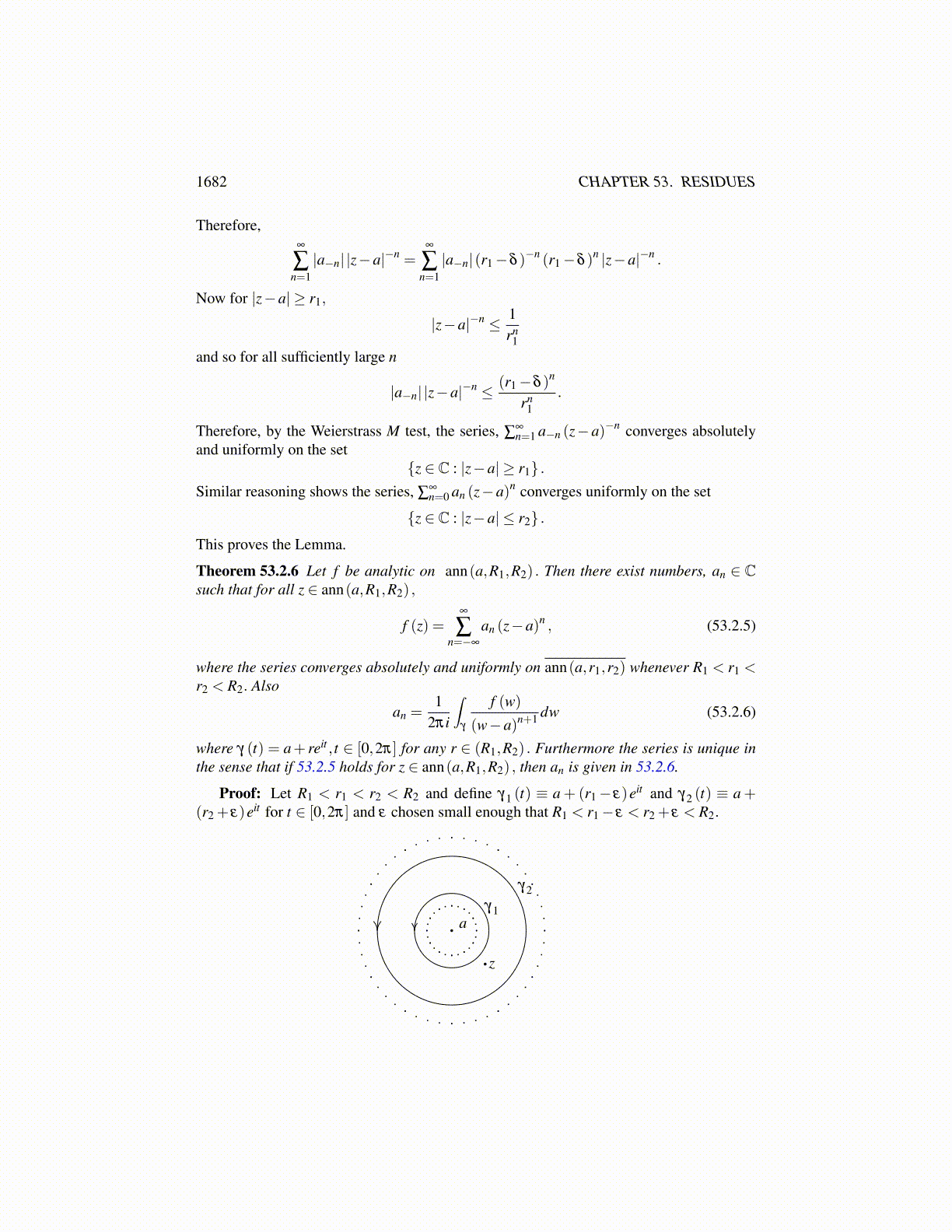
1682 CHAPTER 53. RESIDUES
Lemma 53.2.2 Let γr (t) ≡ a+ reit for t ∈ [0,2π] and let |z−a| < r. Then n(γr,z) = 1. If|z−a|> r, then n(γr,z) = 0.
Proof: For the first claim, consider for t ∈ [0,1] ,
f (t)≡ n(γr,a+ t (z−a)) .
Then from properties of the winding number derived earlier, f (t) ∈ Z, f is continuous,and f (0) = 1. Therefore, f (t) = 1 for all t ∈ [0,1] . This proves the first claim becausef (1) = n(γr,z) .
For the second claim,
n(γr,z) =1
2πi
∫γr
1w− z
dw
=1
2πi
∫γr
1w−a− (z−a)
dw
=1
2πi−1
z−a
∫γr
11−(w−a
z−a
)dw
=−1
2πi(z−a)
∫γr
∞
∑k=0
(w−az−a
)k
dw.
The series converges uniformly for w ∈ γr because∣∣∣∣w−az−a
∣∣∣∣= rr+ c
for some c > 0 due to the assumption that |z−a| > r. Therefore, the sum and the integralcan be interchanged to give
n(γr,z) =−1
2πi(z−a)
∞
∑k=0
∫γr
(w−az−a
)k
dw = 0
because w→(w−a
z−a
)k has an antiderivative. This proves the lemma.Now consider the following picture which pertains to the next lemma.
γr
a